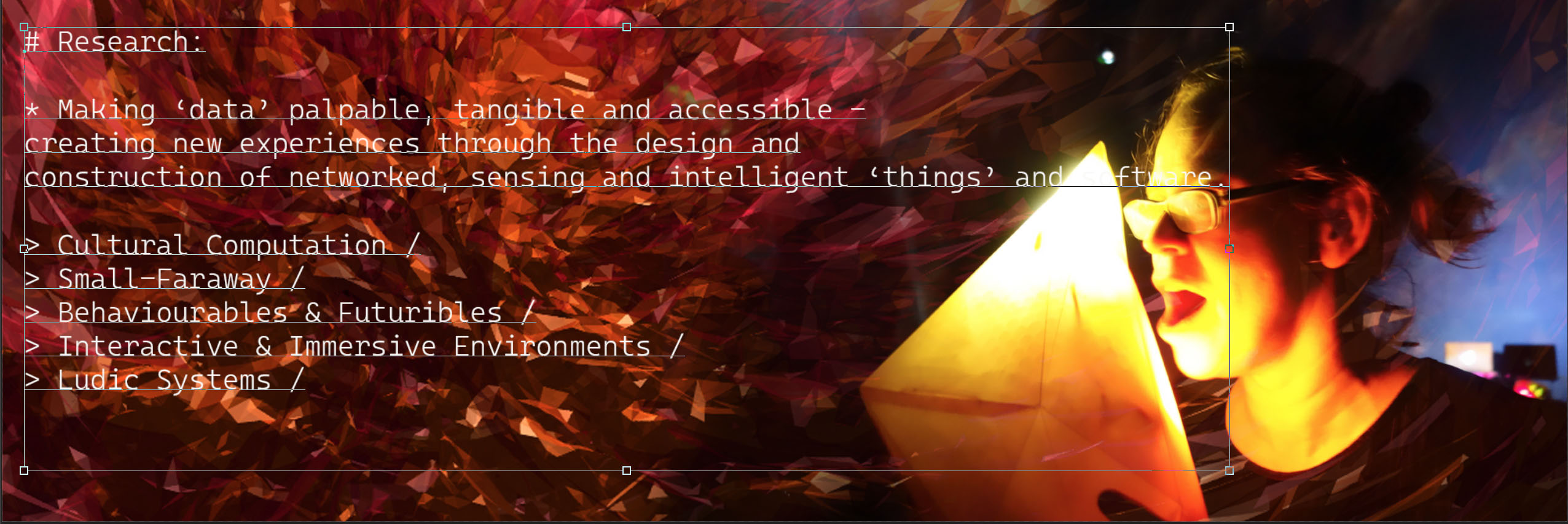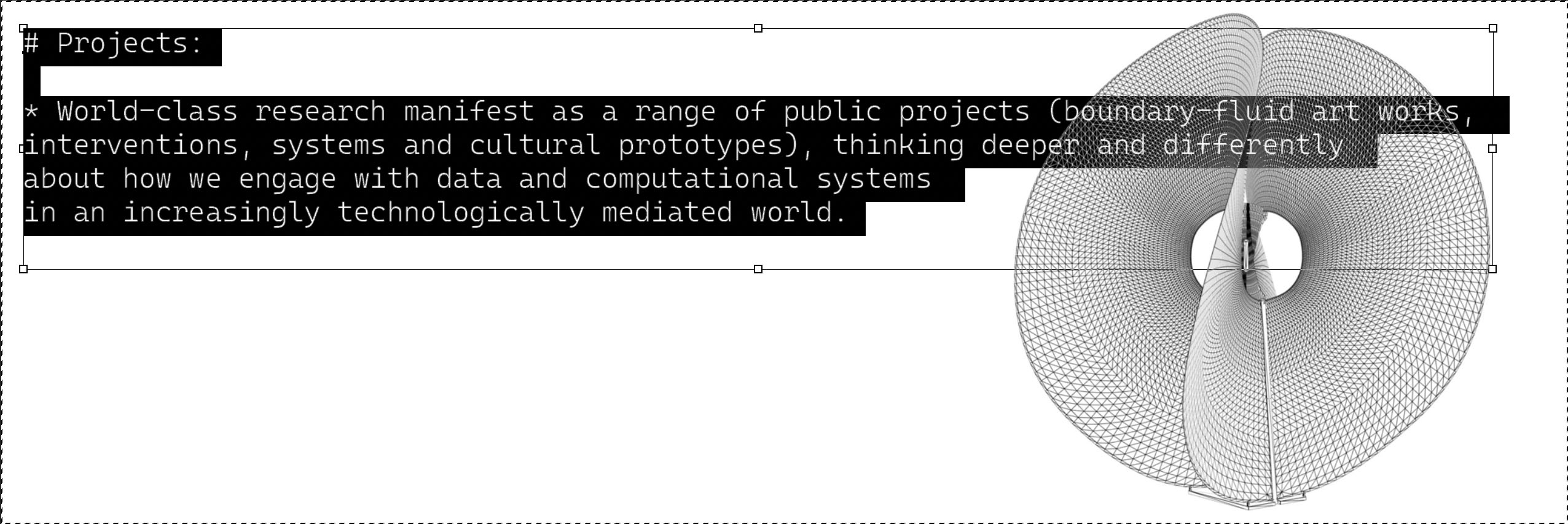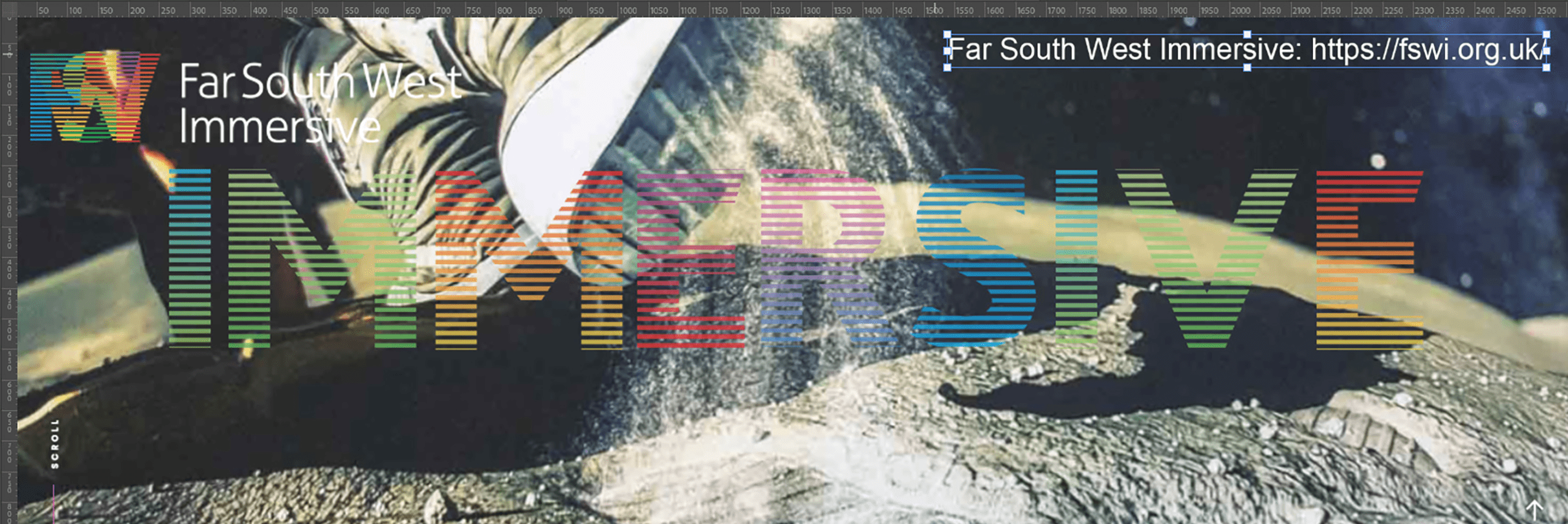i-DAT launched OP-SY.com – a central repository for its Operating Systems on the 27/11/2010. Nearly 10 years later it is archiving these projects as they have evolved into the Quorum Programme and beyond. This website used to be www.s-os.org and part of the OP-SY Programme.

S-OS System Downloads Projects Information
i-DAT is developing a range of ‘Operating Systems’ to dynamically manifest ‘data’ as experience in order to enhance perspectives on a complex world. The Operating Systems project explores data as an abstract and invisible material that generates a dynamic mirror image of our biological, ecological and social activities.
S-OS is a collection of creative interventions and strategic actions that provide a new and more meaningful ‘algorithm’ for modelling social exchange, evaluation and impact, proposing a more effective ‘measure’ for ‘Quality of Life’.
The idea of a ‘Social Operating System’ has emerged through the prominence of OnLine Social Networking Software such as Facebook and Myspace. These websites, software that drives them and the online communities that thrive around them form a “platform for online living where all social activities are integrated.” Wired (2007).
The S-OS project provides an Operating System for the social life of a City, community, or cultural event. It superimposes the notion of an ‘OnLine’ Social Operating System onto ‘RealLife’ human interactions, modelling, analysing and making visible social value.
Whilst town planners and architects model the ‘physical’ City and Highways Department’s model the ‘temporal’ ebb and flow of traffic in and around the City, S-OS will model the ‘invisible’ social exchanges of the City’s inhabitants.

S-OS System Downloads Projects Information
System

The S-OS system is a flexible collection of technologies that feed and feed off the S-OS API and database.
It consists of:
Mobile Apps: Android, iOS, java.

These Apps provides users with an intimate window on the S-OS System. The App integrates:
- User Account: allows users to register and access their individual account on the central S-OS website. The app also provides a unique user id/ticket on the phone screen. This can also be used to register at specific locations, such as the ‘Probes’.
- Feedback: Allows users to post messages to the S-OS System
- Upload: Images, movies and audio upload to the S-OS System
- Incentivisation: Receive ticketing updates, offers and options for increased participation.
- Event Information: Schedules, Maps, etc.
- Flow: GPS tracking of visitors to monitor hotspots, visitor flow and enable responsive targeting to clusters of users, etc. This would allow event organisers to alert visitors to specific locations and provide a responsive management of resources to support more popular sub-events.
- AR View: Basic Augmented Reality perspective of an event.
The integration of the above processes through Mobile Apps allows event organisers to track and steer visitor flow, gain a real-time sense of the mood of the event and responsively feed visitors information, opportunities and incentives.
Probes:

The Probes are sensing devises placed strategically around an event/site/city. The Probes provide a focus for public interaction, providing feedback to visitors through dynamic visualisations, information. They also capture real-time information adding another layer of mood sensing.
Probes are bespoke systems for locations which range from buildings, festival sites and remote windswept landscape. Probes fit into a class of technology topically described as the Internet of Things. They may be equipped with:
- WiFi: WiFi hotspot providing access to the website and network access for the mobile apps.
- Eye: The Eye acts as a visitor counter, measuring the flow of people and mood through the integration of a smile recognition counter.
- Ear: The Ear measures audio levels to understand the ambient hum of the event.
- Scan/Print: A ticket (QR/Barcode) scanner is incorporated to allow non mobile app users to log their presence and receive incentives and ticket updates on the Probes screen and printer.
- Visualizer: The visualizer displays the rich dynamic data visualisations from the System on the Probe screen.
- People counters: to track footfall
- Bluetooth: Bluetooth hotspots for locative media broadcasting
- NFC/RFID Tags: for data augmentation
Probe technologies overlap with the remote and local sensing systems developed for OP-SY.com.
Web-Engine:

The S-OS Web-Engine manages and synchronises the interactions between all of the above processes. The server side system provides an administrative backend to the website, apps and probes and an analytics tool which looks for patterns and behaviours in the data collected. The Web-Engine integrates the following processes:
- User Accounts: Individual and organisational account management.
- API’s: The system takes advantage of a variety of API’s including Facebook, Twitter and Google Maps, for tracking image posting and messaging.
- Data Scraping: In addition it accesses these API’s to scrape data from social networking activity around the event, twitter, facebook etc.
- Sentiment Analysis: Sentiment Analysis is used to explore the mood of the event by analysing the language used by visitors to describe their experience. These messages are extracted from social networking feeds, onsite feedback through the Probes and the Mobile Apps.
- Probe Feeds: A/V and other Data captured by the Probes (smiles, audio etc).
- Analytics: data is analysed looking for patterns and behaviours before being visualised through the website and mobile apps.
- Administration: The backend allows the events organisers to administer the system, respond to the real time information and post to visitors through the Mobile Apps, Website and Probes.
- Website: The website is the public front end of a S-OS installation, providing a first port of call for the public and provides:
- Information of the project,
- Access to the mobile apps
- Ticketing information pulled from the event organisers
- Rich visualisations of the events
- User portal for individual accounts.
- Publication of event information.

S-OS System Downloads Projects Information
Downloads
Software Readers:
Qualia App:
![]() Qualia Android App: https://play.google.com/store/apps/details?id=com.elixel.qualia
Qualia Android App: https://play.google.com/store/apps/details?id=com.elixel.qualia
![]() Qualia iOS App: https://itunes.apple.com/gb/app/qualia/id710606097?mt=8&ign-mpt=uo%3D4
Qualia iOS App: https://itunes.apple.com/gb/app/qualia/id710606097?mt=8&ign-mpt=uo%3D4
Texts:
Phillips, M, Aga, B., Hazelden, K.(2008) “The Play Algorithm – A(n):= [r = 1,2,…..N]”. In Deiz del Corral, A. (ed), HOMO LUDENS LUDENS, Locating play in contemporary culture and society. LABoral Centro de Arte y Creación Industrial. Gijón, Asturias, Spain: pp 244-248. Catalogue: Homo Ludens Ludens / Local Download:
S-OS
Qualia feed requires password: http://qualia.org.uk/dashboard/
Sample web images:





S-OS System Downloads Projects Information
Projects
Qualia View Project

Hundreds of Things View project

Keji View Project

CO-OS View Project

S-OS v1 View Project


S-OS System Downloads Projects Information
Information
The i-DAT Operating Systems project is managed by the Institute of Digital Art & Technology, and produced by members of the Centre for Media Art & Design Research, in collaboration with members of the School of Computing & Mathematics, Plymouth University.
Information
S-OS development team:
- B Aga, Director of Operations, i-DAT
baga@plymouth.ac.uk - Stavros Didakis, Research Assistant, i-DAT
stavros.didalis@plymouth.ac.uk - Saul Hardman, Research Assistant, i-DAT
hello@iamsaul.co.uk - Chris Hunt, Research Assistant, i-DAT
christopher.hunt@plymouth.ac.uk - Dr Simon Lock, Technical Producer, i-DAT
simon.lock@plymouth.ac.uk - Dawn Melville, Director of Operations, i-DAT
dawn.melville@plymouth.ac.uk - Lee Nutbean: Research Assistant in i-DAT
lnutbean@hotmail.co.uk - Mike Phillips, Director of Research, i-DAT and Operating Systems Project Manager.
mike.phillips@plymouth.ac.uk
Many thanks to all the researchers and students who have contributed to the Operating Systems projects over the years. Individual contributions are acknowledged alongside projects and software downloads.
Project partners
- University of Warwick, Dr Simon Jensen
http://www.beaford-arts.org.uk - Cheltenham Festivals
http://www.cheltenhamfestivals.com/ - Plymouth City Council
http://www.plymouth.gov.uk/ - British Art Show Plymouth
http://www.britishartshow.co.uk/venues/plymouth
Support
i-DAT’s Operating Systems have been developed in collaboration with:













You must be logged in to post a comment.